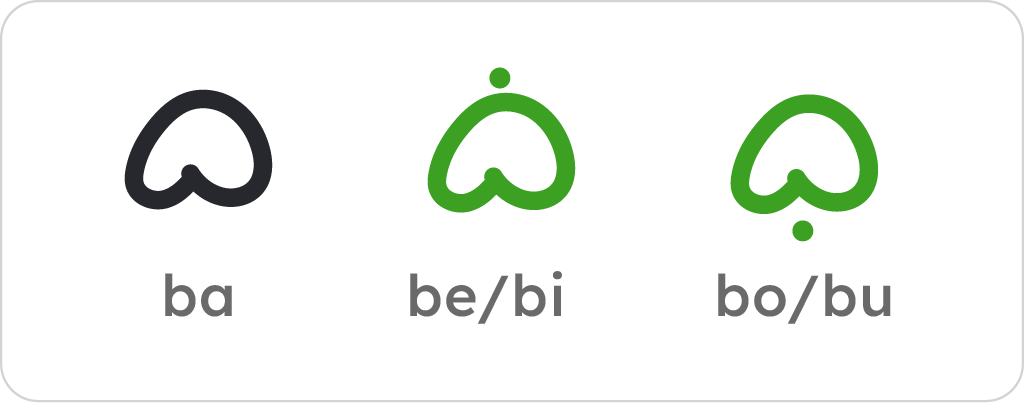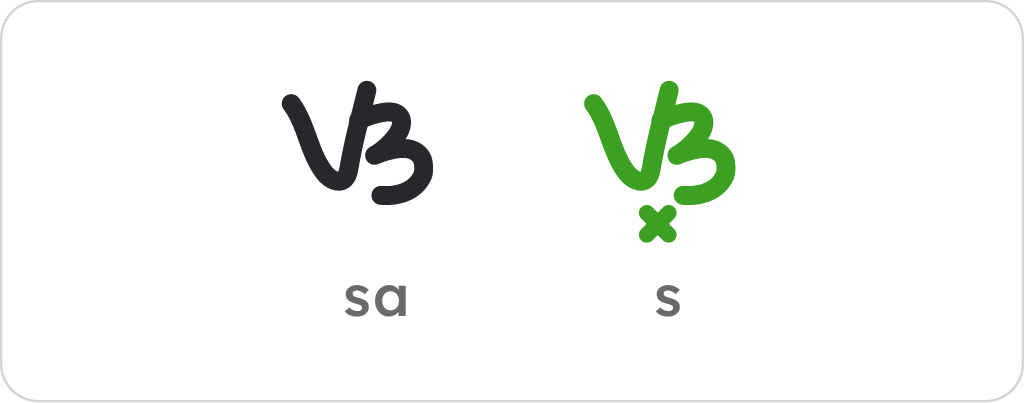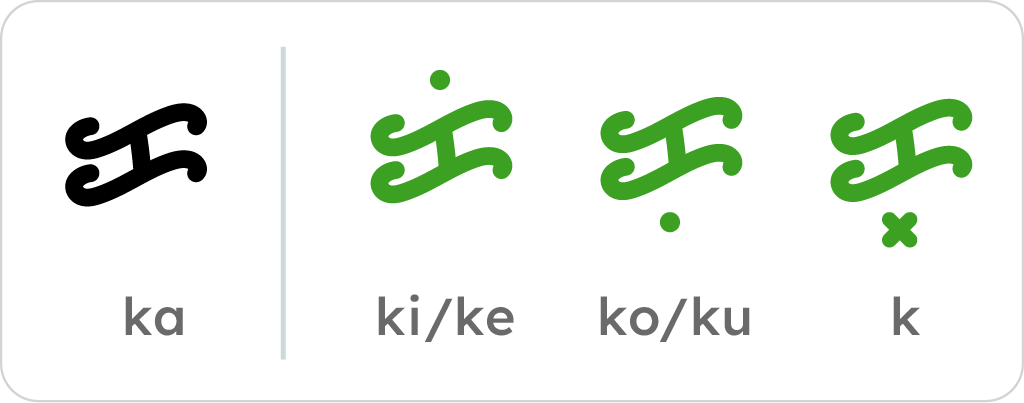Ang Kudlit (or diacritical mark)
Kudlit (or a diacritical mark) can be a dot, apostrophe or comma marking to change to the other vowel sounds.
Consonants without a kudlit are pronounced with an a sound.
ba ka da
If the kudlit is above it will be read as 'e' or 'i'.
So ba will now be read as be or bi.

For 'o' or 'u', you put the kudlit below the character.
You now read ba as bo or bu.

The pamudpod or krus-kudlit is an x symbol, dash symbol or a cross symbol under the consonant to remove the a vowel and it will be a stand-alone consonant.
Tip:
As a general rule, if you see a Baybayin character with a kudlit on top of the letter that indicates ending in e or i like

For kudlit or pamudpod at the bottom of the character it is for the o or u or just the single letter itself.
And, of course, without any markings will always be ending in an a sound.
As for the patinig or vowels, the kudlit (or pamudpod) does not apply.
Now let’s apply what you’ve learned to the Consonants (Mga Katinig) in the next lesson.